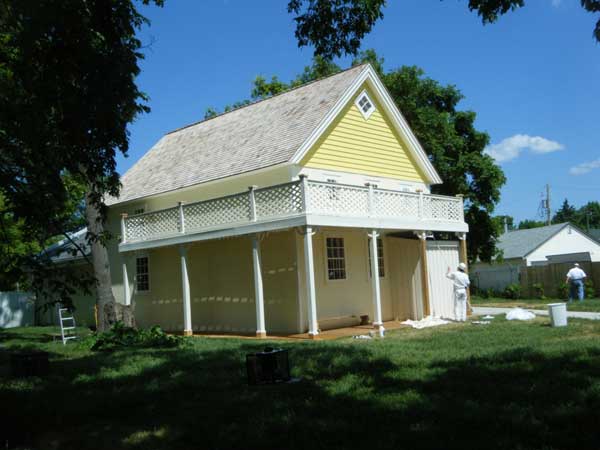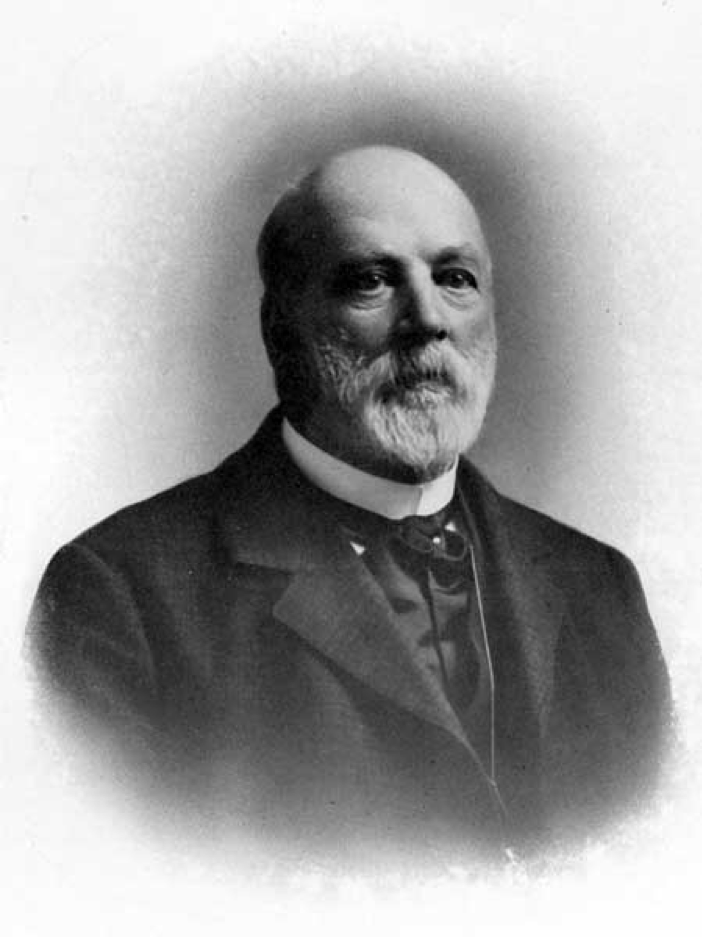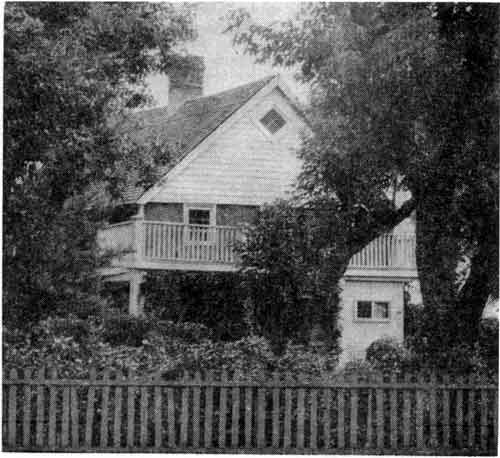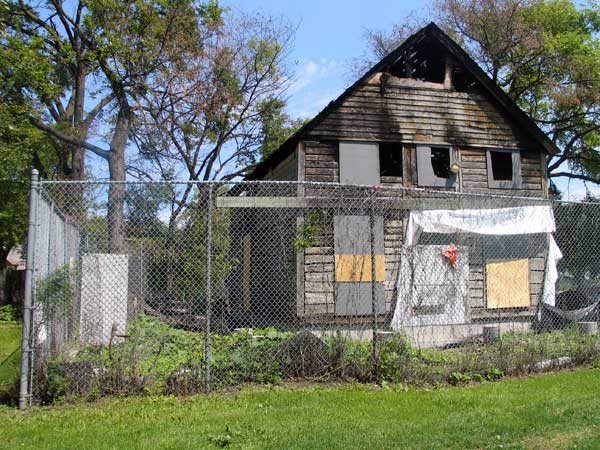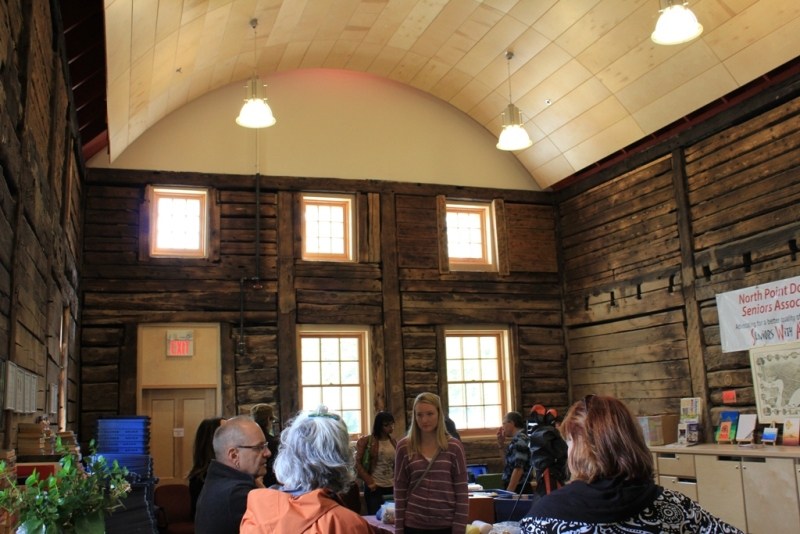.png)
Reprinted with permission from Heritage Winnipeg
Barber House is located at 99 Euclid Avenue in North Point Douglas, and was built in 1862. Notable for its connections to Winnipeg's earliest families, it is a municipally (1990) and provincially (1987) designated heritage building.
A small, brightly-painted house sits on Euclid Avenue in Point Douglas, with a little diamond window on the second-floor attic. Although newly restored, the house is over 150 years old, and has seen more of Winnipeg's history than almost any other building still standing. Barber House is named for Winnipeg's own Edmund Lorenzo Barber, a humorously unsuccessful merchant that immigrated to what was then the Red River Settlement in 1860. Barber, an American, moved to Canada to head up a store that his cousin had brought from dry-goods wholesaler W.G. Fonseca.
Soon after moving to the Red River Settlement, Barber made one of the most, if not the most, business-savvy moves of his career and married Barbara Logan, the Countryborn (Anglo-Metis) daughter of Scottish immigrant Robert Logan and Mary, a Salteaux woman. Robert Logan was one of the earliest immigrants to the Red River settlement, having moved there in 1819 with his wife and eldest five children. He was also one of the most successful, opening up the settlement's first windmill in 1825. Since Barber's own business sense did not exactly inspire confidence, a certain amount of the continued indulgence for his business endeavours sprang from his social connections.
Not only did this connect Barber directly to the Logans, one of the most prominent local families, but also strengthened his personal connection to actually-successful businessman W.G. Fonseca (Barbara Barber was aunt to Fonseca's wife Margaret Logan). Fonseca, whose full name is the impressive Don Derigo Nojada Gomez da Silva Fonseca, was an alderman with the City of Winnipeg for six terms, involved in planning many of Winnipeg's streets and held a large amount of land in the form of rental properties, along with various other business ventures over the years. To give some perspective on Fonseca's status in early Winnipeg: an 1881 map of the city which lists notable buildings includes just three residences, those of James Ashdown, John Schultz, and William Gomez Fonseca.
If Barber did immigrate to Canada to try and avoid the upheaval of conflict, he was soon to be disappointed. Although he enjoyed a short period of prosperity from 1868-1869 until a crop failure signalled a downturn, the transfer of most of Rupert's Land from the Hudson's Bay Company to Canada was about to trigger the Red River Resistance. After the Resistance, many Metis families moved outside of the Red River Settlement.
Some prominent Metis families did remain in Manitoba, like the Logans. Barber's father-in-law Robert Logan had died three years earlier in 1866 - a giant in early business, the senior Logan had purchased Fort Douglas for his own personal estate. Barber's brother-in-law Alexander (son of Robert Logan with his second wife Sarah) became mayor three separate times in the next 20 years. While Barber was well-connected through his relationship with the Logan family, his own business sense seemed to only get worse:
1871 - Barber tries to open a store in Portage la Prairie - it fails.
1872 - Barber opens saloon in North Dakota, thought to be a surefire moneymaker - also failed.
1873 - Barber purchases a newspaper, The Nor'Wester, which goes so poorly that Barber has to seek a loan from John Schultz to keep it afloat. It goes into debt.
Later, 1873 - Barber is summoned to court by his many angry debtors.
1875 - Barber starts to sell off his property in Point Douglas to try and pay his debts. At this time, Point Douglas was developing into an area of elite residential housing, with James Ashdown and W.G. Fonseca also holding land there.
1877 - Winnipeg enters a boom. Barber becomes a co-partner in the Winnipeg Ice Company, which is notable - for being an early business failure in the boom era.
1880 - Barber, optimistic to a fault or perhaps to the point of ignorance, assumes operation of the Manitoba Soap Candle and Oil Works Company. Almost too predictably, it fails.
After almost ten years of disappointing business ventures, Barber returned to the relative safety of real estate. In 1890 he got himself appointed as an issuer of marriage licenses to supplement that income. After the railway was routed through Point Douglas, the neighbourhood was split in two: the southern area becoming home to railway-associated industrial buildings and the northern area remaining residential, but with rapidly-dropping land values. The affordable housing in Point Douglas became the obvious choice for many immigrants in later years. After E.L. Barber died in 1909, his daughter Lily Barber Sparrow continued to live in the house into the 1960's.
If we keep natural repairs done - like keeping the roof from developing leaks - I think this house will be just as firm and well preserved in 100 years. There's no stir to the house at all. We don't feel storms here, like some of the modern houses do
-Lily Barber Sparrow to Lillian Gibbons, 1935
From the 1960's until 1974, the house was rented out before being taken over by the city. In 1979, the City of Winnipeg report called it "seriously deteriorated", and it was no surprise. The house had been standing for over 100 years by that point, and in 1980 the Historic Buildings Committee shockingly recommended the house be dismantled. However, a grassroots campaign in the mid-1980's to restore the building was successful, and from 1986 - 1988 around $160,000 was spent on Barber House to restore the historic building, completed by 1989. Unfortunately, in 1993, the building was damaged by a fire, which may have been deliberately set? A chain link fence was added to discourage arsonists, but the building, still owned by the City of Winnipeg, it continued to deteriorate for a number of years more.
In 2000, a report noted that the log structure frame was still sound, despite years of neglect. Heritage Winnipeg obtained funding in 2004 to commission a feasibility study for Barber House, and started meeting with the North Point Douglas Residents' Association to ask what they wanted done with the Barber House. Overwhelmingly, the responses indicated that residents wanted to see the house kept, refurbished, and possibly turned into a community facility. Incredibly, in 2010, when Heritage Winnipeg along with the Residents' Committee was trying to obtain funding for renovations, Barber House was set on fire once again. Far from being the death knell for this historic house, the fire meant that funding proposals had to be revised. Federal funding was provided to the tune of $270,000 which was matched by the city, in addition to other sources of funding, and work began to finally restore the iconic heritage building. Incredibly, the core structure of the building was still sound, even after the two fires.
Barber House was reopened in 2011, now owned by SISTARS (Sisters Initiating Steps Towards a Renewed Society), a community group in Point Douglas. In 2012, Bridgman Collaborative Architecture and SISTARS received a Commercial Conservation Award from Heritage Winnipeg for their restoration of Barber House at the Annual Preservation Awards, hosted in the historic home. The iconic heritage building now serves as a home for the North Point Douglas Seniors' Association, and the much needed daycare has been built on the adjacent Barber House property for the community. It seems almost like a miracle that through two fires, the walls of Barber House still stand firmly in their original place, where they have been for over 150 years. It's hard not to think of Barber House as symbolic of Point Douglas itself, surviving and thriving due to a sturdy core, whether of oak logs or dedicated homeowners!
Written by Natassja Brien for Heritage Winnipeg
SOURCES:
Heritage Winnipeg Resource Centre & Files
MHS: Winnipeg's Oldest Houses
City of Winnipeg Long Report
MHS: Barber House
MHS: Robert Logan
MHS: E. L. Barber
MHS: W. G. Fonseca
Stories Houses Tell


